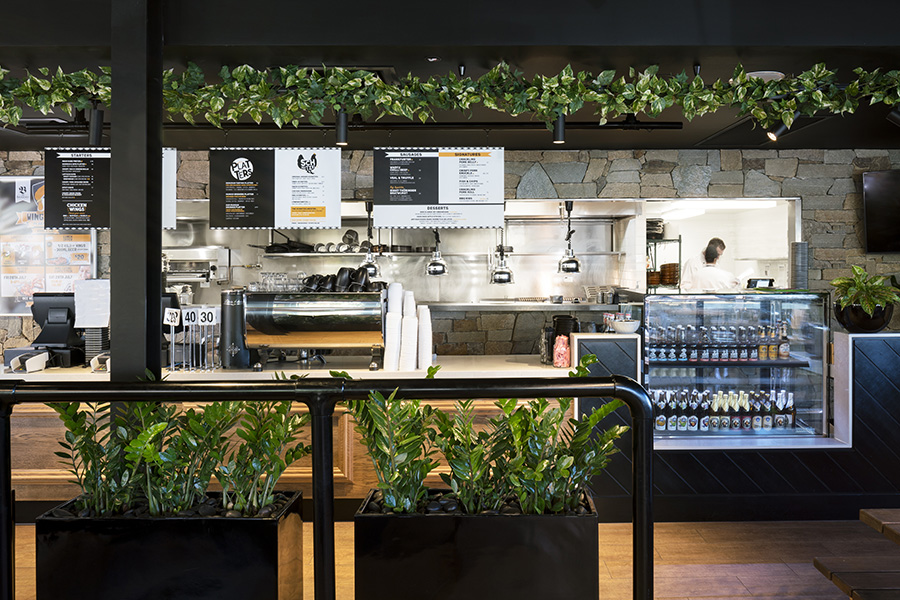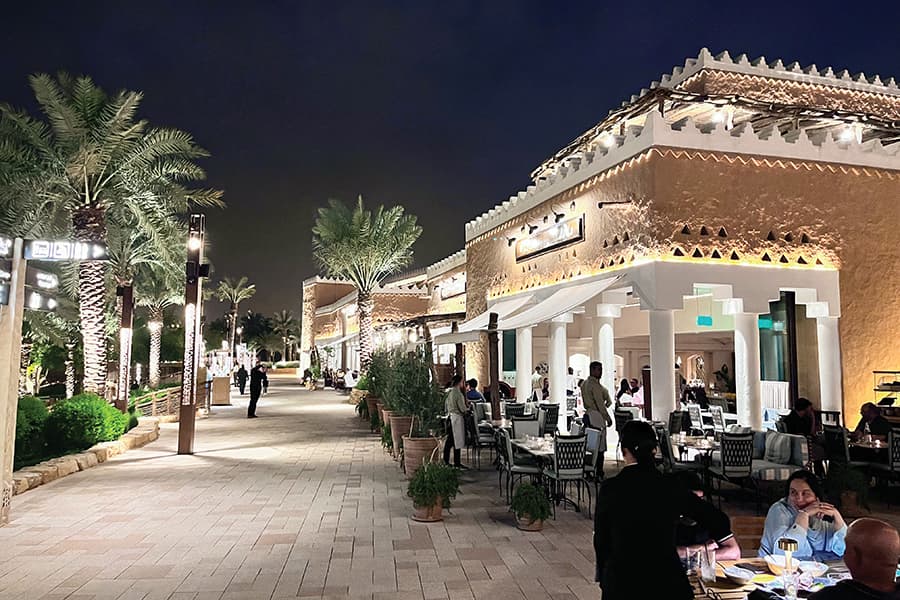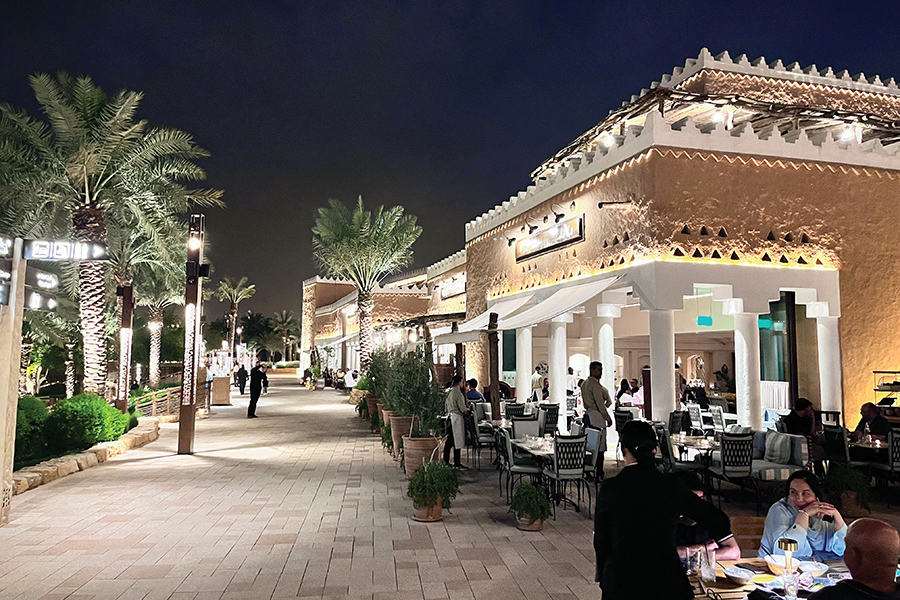We love Mini Guns! They play such an important role in the fabric of our communities. Whether standing in the shadows of a Big Gun, focusing on the needs of the specific pockets of the local demographics or acting as the Big Gun for many Australian rural towns, Mini Guns always have a chance to give themselves a strong point of difference and connect with the customer in a more intimate way than their larger siblings. In fact, when it comes to food, Mini Guns dedicate more specialty stores to food retail and food catering than regional centres (30% compared to 24%), making food the largest specialty category for Mini Guns. An average Mini Gun of around 20,000m2 in size will typically contain around four food retail specialties and about 10 food catering outlets.
With the growth in food catering post GFC, Mini Guns of recent years, like Gas Works in Brisbane and East Village in Sydney, are making a bold play with both food retail and food catering specialties to ‘mark their territory’ as a food destination.
But is food the magic growth hormone for all Mini Guns? In this article, B&P will share with you our insights and strategies for identifying when a Mini Gun should grow the food, and when it should go slowly.
3 keys to food planning success
There is certainly no cookie-cutter approach that can be taken to developing a food strategy for a Mini Gun. Although almost every developer we know would love a ‘Grounds of Alexandria’ anchoring their Mini Gun food precinct, what works well in a disused pie factory in the inner suburbs of Sydney can not be transferred to the south eastern suburbs of Queensland, without first considering these key characteristics of the development and the trade area:
1. Know your customer
2. Know your precinct
3. Plan your spaces.
Know your customer
Now, I know it seems like Retail Planning 101 to many readers, but it is surprising how frequently we find that our clients have overlooked a key element of their trade area’s profile that can have a major impact on whether food retail or food catering is an opportunity for their Mini Gun. I will always remember a client who was ready to invest $30 million in creating a new dining precinct, while our team uncovered that the trade area has the highest gas consumption per household in the state. When we looked into the size of the various nationalities’
representation in the trade area, it all became clear that this was a demographic that loved entertaining at home. The gas consumption was from all the gas rings and spit roasts set up in the garages, so that 30–40 family and friends could get together. This wasn’t a centre for food catering! This was a centre with a massive opportunity to grow its fresh food specialty by appealing to the cuisine-specific needs of its multicultural residents – not growing its night-time food catering offer!
B&P has identified over 20 nuances we look for in the trade-area demographics, to identify whether to grow the food retail or the food catering aspects of a Mini Gun. We call these scorecards our Dining DNA Barometer. There’s a lot of science behind how it all comes together, and we’ve listed a few of those nuances in the table below. Of course, there are more and more layers of analysis to undertake, but what we are aiming to do is get as many ‘ticks’ for growth as we can for the trade area, to build a confident picture of which way to go with the food strategy for each individual asset. It’s always an interesting exercise to undertake!
Know your precinct
Our next key criterion is to get to know the Mini Gun precinct. Unlike regional centres, a Mini Gun usually doesn’t have a lot of reason to be shopped outside the main or top-up grocery shop. There are limited apparel specialties for the leisure shopper, no mini majors for the sports enthusiast or homemaker, and rarely cinemas or bowling alleys attached to The Mini Gun. So, a Mini Gun needs to consider its proximity to other anchors in the community that drive demand (for food catering in particular), either by day or by night. Trade area characteristics that get us excited in this section of analysis include:
- Adjacent motels, especially those with conferencing capacity, as they bring visitors who always need an evening meals and are keen to dine out
- Level walking distance to the local cinemas
- Cultural venues like sports stadiums, libraries or theatres that can produce either daytime or evening food catering opportunities
Most importantly of all, in order for a Mini Gun to grow food catering as a night-time economy, the dining precinct should connect physically and visually to the main street. Without cinemas or other anchors to the centre, a Mini Gun can rarely build enough critical mass in store numbers to create a destination dining precinct. It needs to be seen by day and night, by as large a portion of the trade area as possible, to trigger engagement.
Plan your space
It is this final point in knowing your precinct which segues smoothly into our final key concept which is to plan your space. Let’s face it – as a Mini Gun, we are only talking about a few shops taking up maybe 1000–1500m2 of space, so you want to make sure that every single square is leased for as premium dollar as possible.
Again, I know it sounds like Retail Planning 101 to stress how critical it is to take a strategic approach to the food catering or food retail lease plan, but time and time again we are brought in to review ailing tenancies, on the verge of being a virtual vacancy, with the tenant seeking rent abatement all because the wrong use has been put in the wrong space in the wrong part of the centre. A classic example earlier this year was when we called in to review and assist a tenant with a new-to-market ‘grilled’ concept. Well, ‘grilled’ is a rising use, and one that would compliment many trade areas and centres, but this naive retailer was leased a 15m2 kiosk outside a supermarket with no extraction and no seating.
It was completely the wrong use for this section of the centre, being the domain of the mission fresh food shopper. Also, without extraction to be able to handle ‘volume’ cooking of barbecue foods, hot chips, etc, and no seating for customers to consume a two-handed hot food item, this tenancy was completely doomed to failure.
Now, offer this tenant a 100m2 tenancy, facing onto the car park where it could trade into the evening when families could really use a value-priced ‘grilled’ experience, in a shop that can cook large amounts quickly and provide some seating, and this tenant and this centre would have both made a great return on their investment.
Spread your risk
A very successful strategy we have employed for Mini Guns is to look at ways to allow food retail and food catering tenants to trade to a longer day part or a broader customer base. Two key strategies here that are very applicable to many Mini Guns are to:
- Plan for food retail tenancies with larger frontages and full grease and extraction services, so that they can mix food retail and food catering together. Examples of this are butchers with a carvery or casserole section, the fishmonger who also does fish and chips, or the baker or deli with a sandwich and coffee offer.
- Mix dine-in and takeaway together to create your after-hours precinct. For trade areas with a mix of young families and DINKS/SINKS, it’s a good idea to co-locate your takeaway pizza franchise, local Thai operator, burger QSR and a café all together, with parking directly out the front to encourage high turnover and patronage for both dine-in offers and for those just wanting to grab takeaway and keep on moving. Liquor and convenience also form good adjacencies to these types of precincts, and can become quite a hive of activity between 5–9pm. So there you have it. The time has come for Mini Guns to step out of the shadows and rightfully claim food as their anchor and raison d’être.






















